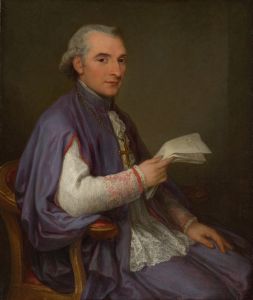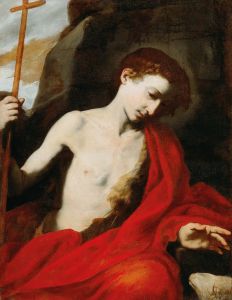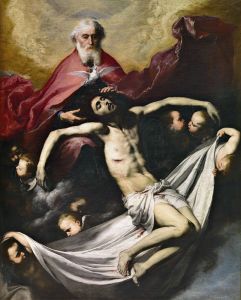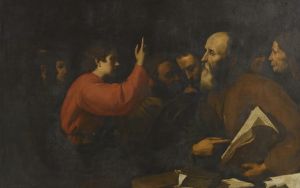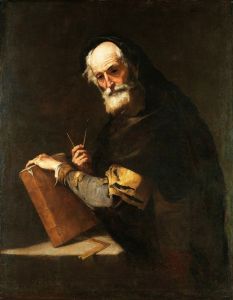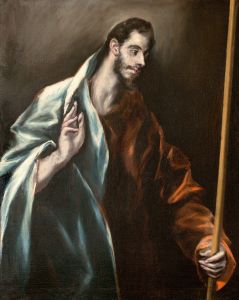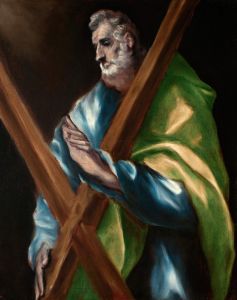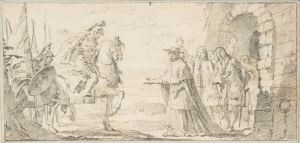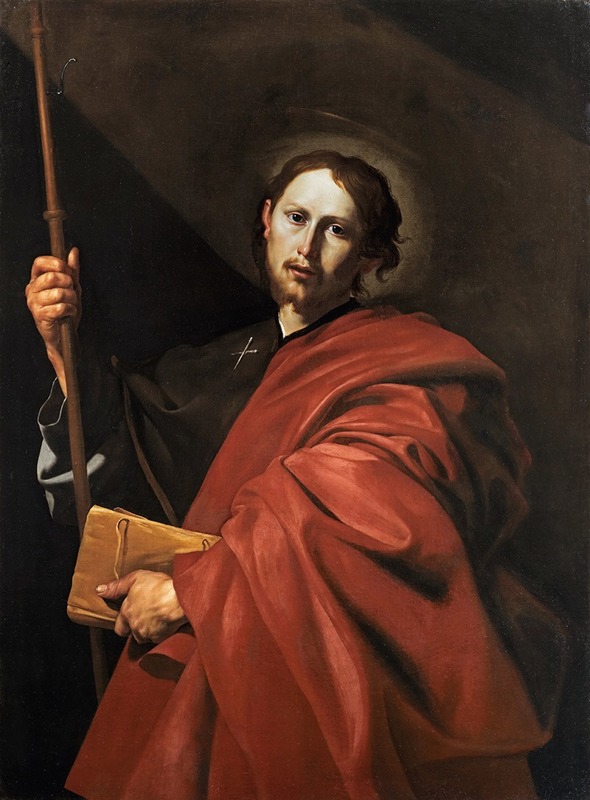
Saint James the Greater
A hand-painted replica of Jusepe de Ribera’s masterpiece Saint James the Greater, meticulously crafted by professional artists to capture the true essence of the original. Each piece is created with museum-quality canvas and rare mineral pigments, carefully painted by experienced artists with delicate brushstrokes and rich, layered colors to perfectly recreate the texture of the original artwork. Unlike machine-printed reproductions, this hand-painted version brings the painting to life, infused with the artist’s emotions and skill in every stroke. Whether for personal collection or home decoration, it instantly elevates the artistic atmosphere of any space.
Saint James the Greater is a painting by the Spanish Baroque artist Jusepe de Ribera, also known as José de Ribera. The work is a notable example of Ribera's mastery in depicting religious figures with intense realism and dramatic use of light and shadow, characteristic of the Baroque period.
Jusepe de Ribera was born in 1591 in Játiva, Spain, and spent a significant part of his career in Italy, particularly in Naples, which was then under Spanish rule. Ribera is often associated with the Caravaggisti, followers of the Italian painter Caravaggio, known for their use of chiaroscuro (the contrast of light and dark) to achieve a sense of volume and three-dimensionality.
Saint James the Greater, also known as Santiago el Mayor, is one of the twelve apostles of Jesus Christ and is traditionally considered the first apostle to be martyred. He is often depicted as a pilgrim, with attributes such as a scallop shell, a pilgrim's staff, and a wide-brimmed hat. Ribera's depiction of Saint James the Greater is a powerful and evocative representation of the saint.
In this painting, Ribera portrays Saint James with a strong sense of realism and emotional depth. The saint is depicted as a robust, elderly man with a weathered face, suggesting a life of hardship and devotion. His expression is contemplative, and his eyes are directed upwards, possibly indicating a moment of divine inspiration or communication. The use of light in the painting is particularly striking, with a strong light source illuminating the saint's face and upper body, creating a dramatic contrast with the darker background. This technique not only highlights the physical features of Saint James but also imbues the painting with a sense of spiritual intensity.
Ribera's attention to detail is evident in the textures of the saint's skin, hair, and clothing. The folds of the fabric and the roughness of the skin are rendered with meticulous care, enhancing the realism of the image. The painting's composition, with the saint's figure dominating the canvas, draws the viewer's attention directly to the subject, emphasizing his importance and sanctity.
Saint James the Greater by Jusepe de Ribera is housed in the Museo del Prado in Madrid, Spain. The Prado Museum is one of the most important art museums in the world, with a vast collection of European art, including works by other Spanish masters such as Diego Velázquez and Francisco Goya. Ribera's painting is part of the museum's extensive collection of Baroque art, which showcases the richness and diversity of this artistic period.
Ribera's work, including Saint James the Greater, is celebrated for its powerful realism and emotional depth. His ability to convey the humanity and spirituality of his subjects has earned him a prominent place in the history of art. Saint James the Greater remains a significant example of Ribera's artistic achievements and his contribution to the Baroque movement.





